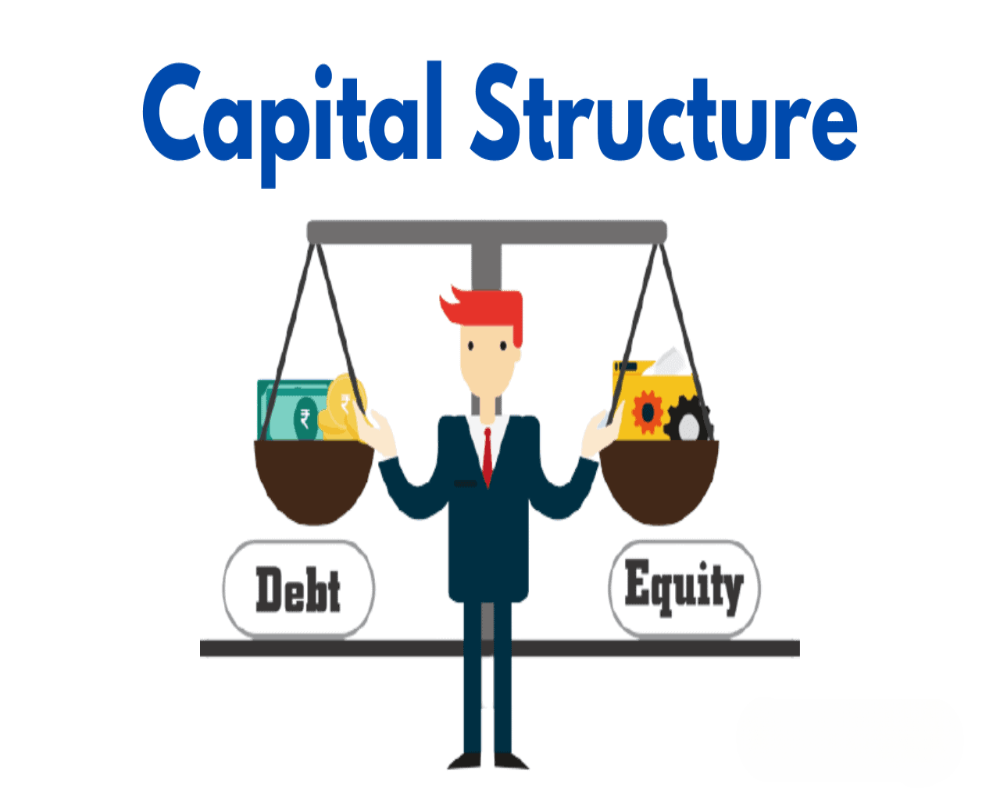Introduction
Capital structure is a cornerstone of financial strategy for any business, particularly in the industrial sector where large-scale investments, long gestation periods, and asset-heavy operations are common. In essence, capital structure refers to the way a company finances its overall operations and growth by using different sources of funds, primarily debt and equity.
For industrial enterprises—whether in manufacturing, infrastructure, energy, or heavy engineering—the right capital structure can ensure financial stability, optimize returns, and support long-term expansion. On the other hand, a poorly designed capital mix can lead to financial distress and hinder competitiveness. This article provides a detailed explanation of capital structure in the context of industrial finance, highlighting its components, importance, influencing factors, and strategic implications.
1. Defining Capital Structure
Capital structure refers to the proportion of debt and equity that a company uses to finance its assets, operations, and expansion plans. It includes:
- Equity Capital: Funds raised through shareholders, including common and preferred stock.
- Debt Capital: Borrowed funds, such as loans, bonds, and debentures, that must be repaid with interest.
- Hybrid Instruments: Financial tools like convertible debentures and preference shares that have characteristics of both debt and equity.
The goal is to strike a balance between risk and return, ensuring adequate liquidity while minimizing the cost of capital.
2. Components of Capital Structure
a. Equity Capital
Equity represents ownership in the company and does not entail repayment obligations. In industrial finance, equity is raised through:
- Promoter contribution
- Public or private offerings
- Retained earnings and reserves
Advantages:
- No fixed repayment
- Enhances creditworthiness
- Absorbs business shocks
Disadvantages:
- Dilution of ownership
- Dividends are not tax-deductible
b. Debt Capital
Debt involves borrowing funds from external sources such as banks, financial institutions, or bondholders.
Common sources:
- Term loans
- Working capital loans
- Industrial development bonds
Advantages:
- Interest is tax-deductible
- No dilution of control
Disadvantages:
- Mandatory repayment
- Increases financial risk
c. Hybrid Capital
Hybrid instruments combine features of both equity and debt. Examples include:
- Convertible debentures
- Preference shares
- Mezzanine financing
These instruments offer flexibility and are often used to attract investors with varied risk appetites.
3. Importance of Capital Structure in Industrial Finance
a. Cost Efficiency
An optimal capital structure minimizes the weighted average cost of capital (WACC), enhancing overall profitability.
b. Financial Flexibility
A well-balanced structure provides flexibility to raise funds as needed without overburdening the company with interest obligations.
c. Risk Management
Debt increases financial risk, especially during economic downturns. A prudent capital mix helps mitigate this risk while maintaining funding capacity.
d. Investor Confidence
A stable and efficient capital structure builds investor trust and improves the company’s ability to attract future capital.
4. Factors Influencing Capital Structure Decisions
Several internal and external factors influence how an industrial company structures its capital:
a. Nature of Business
Capital-intensive industries like steel, oil, or infrastructure may favor higher debt to leverage fixed assets, while technology-based firms may rely more on equity.
b. Cash Flow Stability
Stable cash flows allow for higher debt capacity. Volatile businesses may prefer equity to avoid fixed obligations.
c. Interest Rates and Market Conditions
When interest rates are low, debt becomes cheaper. Equity may be preferred during bullish stock markets.
d. Tax Policies
The tax-deductibility of interest payments makes debt financing more attractive in jurisdictions with higher corporate tax rates.
e. Regulatory Environment
Capital structure decisions are often shaped by industry regulations, such as debt-equity norms set by government bodies or lenders.
5. Strategic Approaches to Capital Structuring
Industrial enterprises often adopt the following strategies to build an effective capital structure:
a. Leveraging for Growth
Using debt to finance expansion while maintaining equity control.
b. Conservative Structuring
Keeping debt levels low to reduce financial risk and increase long-term sustainability.
c. Dynamic Capital Structuring
Adjusting capital mix based on life cycle stages—more equity in the startup phase, more debt during growth and maturity.
Conclusion
Capital structure is a vital aspect of industrial finance that directly influences a company’s financial health, operational efficiency, and strategic agility. For industrial businesses, which often face high capital demands and extended payback periods, choosing the right mix of debt and equity is crucial. An optimal capital structure balances the need for growth funding with the discipline of financial responsibility, supporting both short-term operations and long-term goals. Through strategic planning, regular financial review, and adaptation to market conditions, industrial firms can build robust capital structures that drive sustainable success.
Hashtags
#CapitalStructure #IndustrialFinance #Finance101 #InvestmentStrategies #FinancialLiteracy #CorporateFinance #DebtEquity #FinancialManagement #BusinessFinance #CapitalMarkets #FundingStrategies #FinancialAnalysis #RiskManagement #InvestmentBanking #FinancialPlanning #EquityFinancing #DebtFinancing #BusinessGrowth #FinancialEducation #WealthManagement


